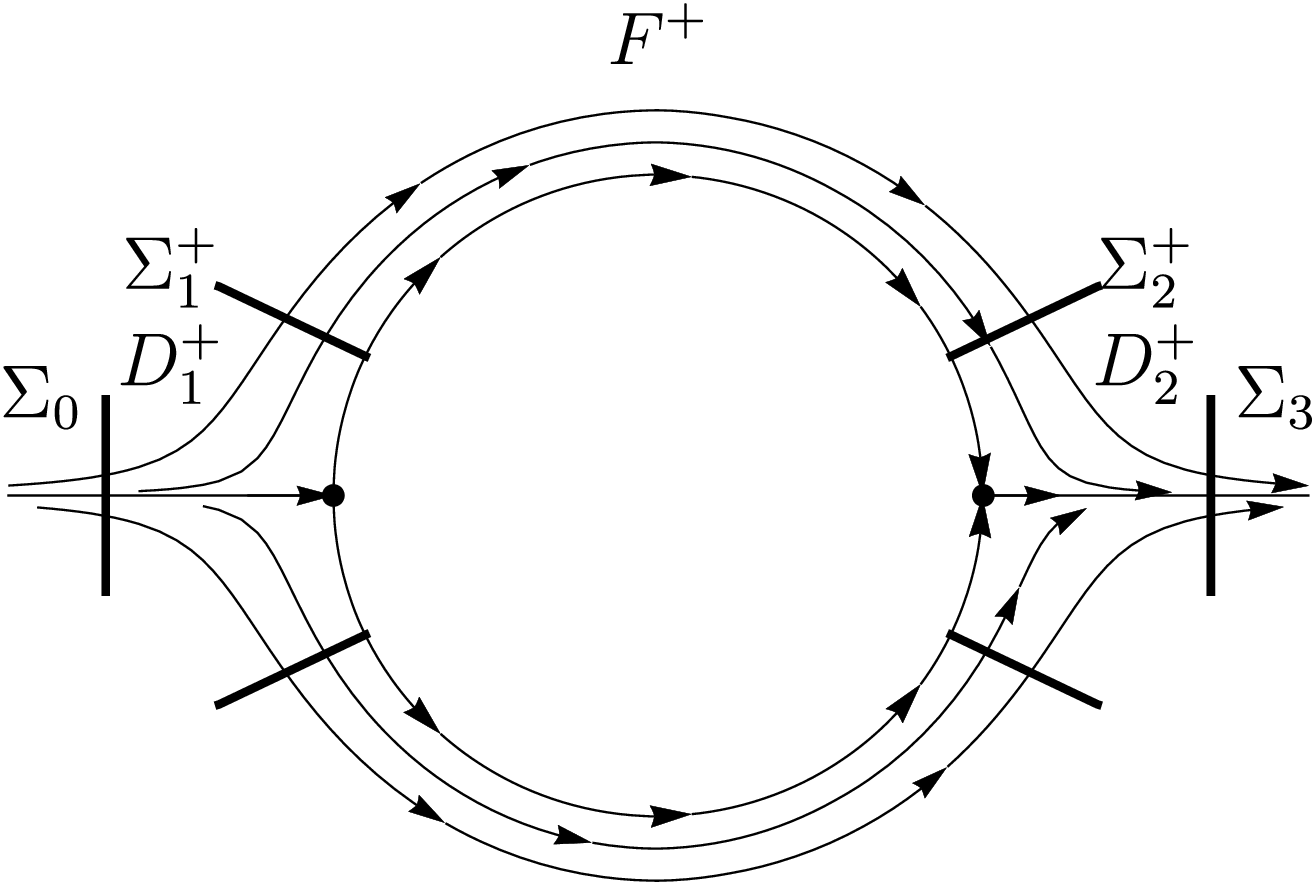normal form theory
getting the simplest coordinates
Normal form theory attempts to rigorously answer the question: when are two local representations actually just different representations of the same mathematical object? Moreover, it gives a procedure for computing the simplest representation of that object.
It is predominantly studied in the context of singularities (or fixed points) of vector fields and maps. In this context, a core question it answers is whether there exists smooth coordinates that transforms a nonlinear differential equation into its linearisation at a singularity.
Normal form theory for degenerate singularities of vector fields featured heavily in my thesis on collision singularities in the


Most recently, myself, along with collaborators, have shown the connection between near-axis expansions of stellarator fields and normal form theory for Hamiltonian systems (see (Duignan & Meiss, 2021)). Moreover, the theory has proved useful in showing the existence of the much used Hamada and Boozer coordinates when in the neighbourhood of a magnetic axis. This work used many interesting ideas from presymplectic and symplectic geometry, see (Burby et al., 2021; Perrella et al., 2023).